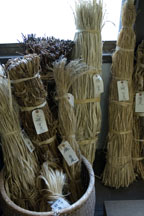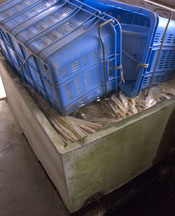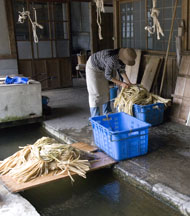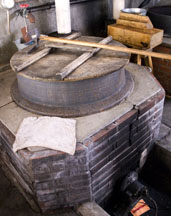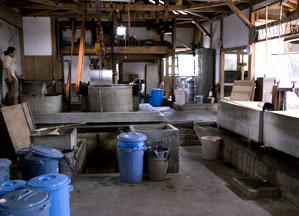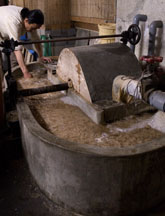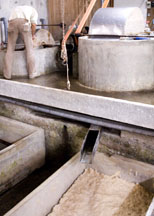Kurotani Washi (Japanese Paper)
|
Buddhism and papermaking were
introduced to Japan from China around 1400 years ago. Kurotani is a
papermaking town near Kyoto. Today
washi is used for books, woodblock
prints, wrapping, and clothing. A quick look at the papermaking
process in Kurotani is shown
on this web page.
|
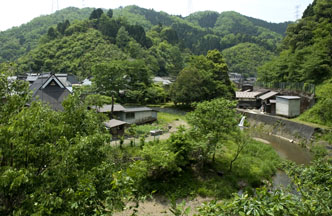 |
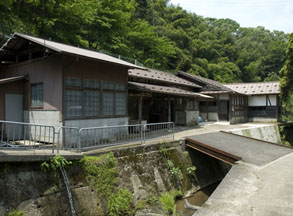 |
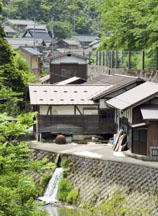 |
|
Kurotani (the papermaking studio is on the right). |
The papermaking studio. |
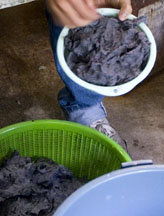 |
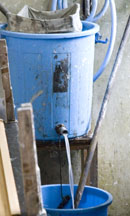 |
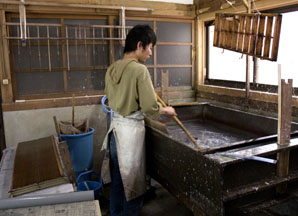 |
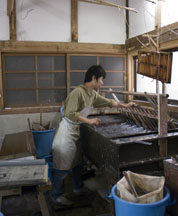 |
| Dyed pulp is used to make colored paper. |
Neri helps keep the pulp suspended in the water. |
Pulp, neri (a
viscous solution that comes from the root of the Tororoaoi plant of the
hibiscus family), and water are mixed together. |
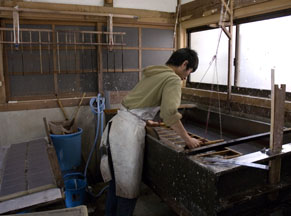 |
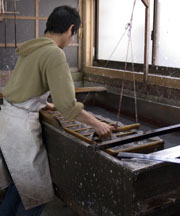 |
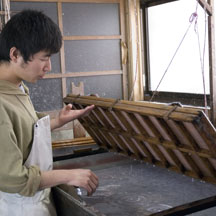 |
| A flexible su is placed over the
mold, then it is dipped and drained three times
to make 20 thick postcard-size papers. |
The mold is tipped and drained. |
 |
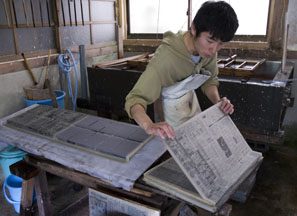 |
 |
| Damp newspaper is carefully placed on the post to
separate the wet paper. |
The edges of the paper are evened with a plastic
ruler. |
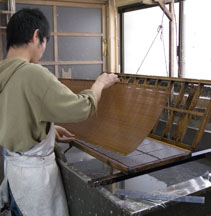 |
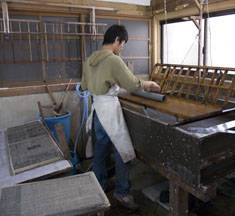 |
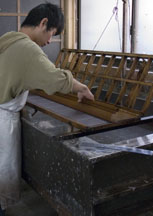 |
| Another su is placed on top of the wet paper. |
A plastic pipe is rolled over this su,
then it is removed. |
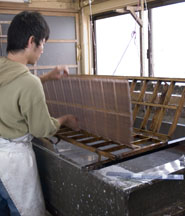 |
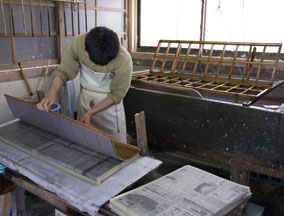 |
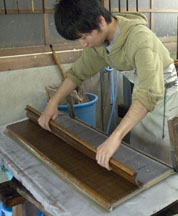 |
| The su is removed from the frame, the paper is
carefully couched onto wet newspaper, then the su is peeled off.
The finished post of newly made paper is then placed in a press for several
hours (or overnight) to remove more moisture. |
The paper is dried. |
 |
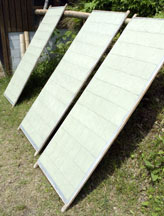 |
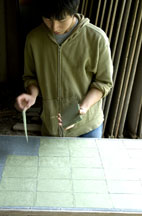 |
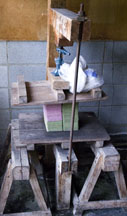 |
|
The pressed paper is dried on a heated drier in damp weather and in
the sun on metal covered boards on good days. |
The dry paper is pressed. |
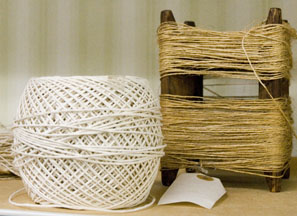 |
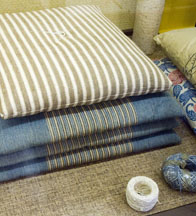 |
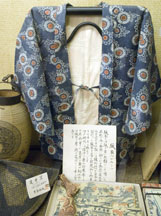 |
| Paper may be spun and woven, or decorated
and used in place of cloth. |
 |
The store / museum has hands-on papermaking two-hour
classes. For more information, please
contact (in Japanese):
Kurotani
Washi Kyodokumiai
Kurotani-cho Ayabe City
Postal Zone 623-0108
Japan
Telephone and Fax: 0773 (44) 0213 |
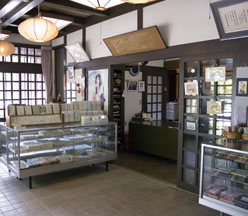 |
LINKS:
Margarita Orozco, Papermakerin Mexico
Los Leņateros Papermaking, Printmaking, and Book Arts Studio in Mexico
Printing in China
Shibori in Kyoto, Japan
Katazome (stencil dying) in Kyoto, Japan
Web page, photographs, and text by Carol Ventura in 2006. Please look at
Carol's home page to see more about crafts around the world.



